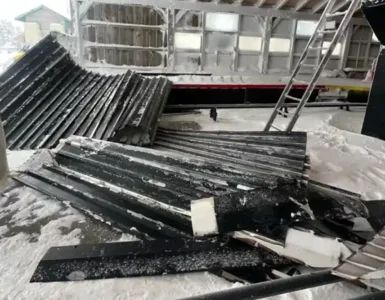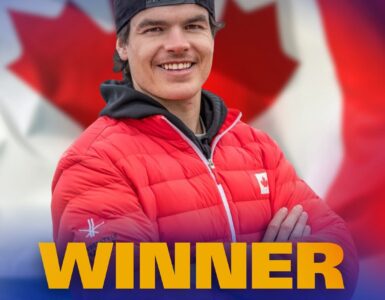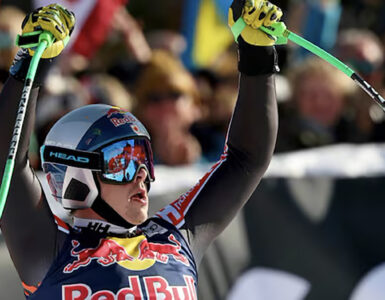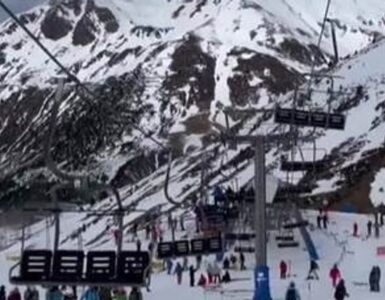After an off-season learning new tricks and flips, the athletes of the Canadian Freestyle Ski Team are ready to show the world the heights they’re capable of achieving.
The competitive season and the launch of the 2014 Sochi Winter Games selection period starts next week for the National Mogul, Aerial, Halfpipe and Slopestyle teams.
Aside from the usual selection of FIS World Cup and Association of Freeskiing Professionals events, the entire team will compete in two marquee competitions this year: the Sochi, Russia World Cup Olympic test event in February and the FIS World Championships in Norway in March.
Here’s a look at what you might expect from the team that won the FIS Nations Cup for the seventh-straight year in 2012.
MOGULS
The mogul squad opens its season on December 15 at the FIS Dual Mogul World Cup in Ruka, Finland.
In the men’s field all eyes will be on teammates Alex Bilodeau (Rosèmere, Que.) and Mikael Kingsbury (Deux-Montagnes, Que.). Bilodeau, the 2010 Olympic Champion is back on the tour full-time after taking most of last season off to focus on his studies. In his absence Kingsbury earned a medal in every FIS World Cup stop and took home the coveted Crystal Globe. With a supporting cast that includes four more men who made it to the top-ten of the FIS standings last season, Head Coach Rob Kober has very high hopes for his team.
And the talent doesn’t stop with the men. Justine Dufour-Lapointe (Montreal, Que.) was second overall last season followed by her sister Chloé in fifth and Audrey Robichaud (Quebec City) in sixth.
Coach Marc-André Moreau, now in his second year with the women’s team said he can’t wait to see what his team does in the opening event, but one thing he knows, they’ll be fast. He explained, “We spent a lot of time training on speed this summer and we’ll really be working that angle in Ruka.”
Robichaud hopes to keep her momentum from last season, which included a first World Cup victory. She said that starting the season with a dual event is, “Almost a trial by fire. But it’s a good way to get into it because you have a lot more runs and there’s a different, more intense, vibe.”
Robichaud added that the first world cup of the season is abit of a reconnaissance mission, “You get a good idea of where everyone is at and you get a good look at the competition. No doubt about it, the one to beat is still Hannah [Kearney, 2010 Olympic Champion from the US], she’s the best for sure.”
HALFPIPE
The Canadian Halfpipe Team including current World Champions Rosalind Groenewoud (Calgary, Alta) and Mike Riddle (Sherwood Park, Alta) is currently training at Copper in Colorado, but the real trial for the team comes on December 14 in Breckenridge with the Dew Cup, which is not only one of the highest profile events of the season, but is also the first event where athletes can start collecting points towards an early selection to the 2014 Sochi Games.
With ski halfpipe making its Olympic debut in Sochi, Head Coach Trennon Paynter said of his team, “This is the first event in all their lives that can start to earn them an Olympic spot. This is pressure these athletes haven’t felt before.”
So, despite a summer of learning new tricks and perfecting old ones, Paynter hopes his team won’t get carried away in Colorado. “I’m trying to make sure they focus on this event, and not look too far into the future.”
Like the mogul team, Paynter will keep an eye out to see what the competition has been up to. He noted that a lot of the top contenders from the US were injured last season, like Simon Dumont and Jenn Hudak, and he expects that team to come back strong. He’s also curious to see what the French have up their sleeves for the season.
SLOPESTYLE
Ski slopestyle will also make its first foray into the Games in Sochi. Canadian Head Coach Toben Sutherland is confident that his young team is going to turn some heads in the freeski world.
The team, of which half the members are in their teens, spent a lot of time this summer on the water ramp. The Lac Beauport National Training Center (CNEAYL) modified one of its jumps to provide Slopestyle specific training. “We noticed last year that jumping was our biggest weakness, probably because most resorts in Canada just don’t have big jumps in their parks, so we put a lot of focus during the summer on water ramping and now our guys are flying,” said Sutherland who expects to see athletes from every nation significantly up their game this season. He said fans can will notice lots of “double cork 1260s” – a single jump with three-and-a-half rotations and two off-axis flips – with various grabs on the men’s side, and quite a few of the women performing off-axis or inverted tricks with grabs.
In fact, it’s on the women’s side where Sutherland expects the most surprises, “There’s been exponential growth there this year, with more girls showing more control and confidence and less flailing.” That being said, he proclaimed that Montreal’s Kaya Turski, three-time X Game and Euro X winner, is still head and shoulders above the field.
Sutherland said he is comforted by the fact that Canada got a jumpstart in the slopestyle game by forming a national team last season, while the rest of the world is just getting started.
The slopestyle team competes at the Dew Cup in Breckenridge, CO on Dec. 16.
AERIALS
The Canadian Aerial Team is capping off its intensive summer training program with a five-week on-snow camp at Apex Mountain in B.C.
Head Coach Daniel Murphy said he is very happy with how the team, including 2012 FIS Crystal Globe winner Olivier Rochon (Gatineau, Que.) has made the transition from the water ramps to snow.
Last season FIS made significant changes in the format of aerial competitions; introducing a system of rounds where athletes move on in the competition based on the results of a single jump. Under the new format competitors will now need three different tricks to win major events, in the past they only needed two. There are also changes coming to the judging system.
Murphy said this new format has meant that his team has had to learn new tricks; and needs to focus on landing those tricks consistently, because if you don’t land a jump it is unlikely you will score high enough to move to the next round.
“You know, on the water ramps we really work on jump execution, but we can’t work on landings so much, but since starting our camp at Apex we’re happy to see that our team has good percentage of landing,” said Murphy.
Murphy is also testing a new triple kicker (jump) for his team, one that he hopes will make a smoother transition for athletes, particularly women, moving from doubles to triples. “The new jump is a little smaller, a little closer to the knoll and has a different angle,” he explained, “We’re testing it at our Apex camp and hope that Sab [Sabrina Guerin from Laval, Que.] will be able to do her first on-snow triples on it at the end of December. First we’ll get the guys to test the jump out for her to make sure it’s good.”
Guerin learned three different variations of triple back flips this past summer, but has yet to try them on snow. Only a handful of women in the world compete triple jumps on the World Cup circuit.
The aerial team has its first FIS World Cup of the season in Changchun, China on January 5, before heading home for the 2013 FIS Freestyle Ski World Cup at Val St. Come on January 12.













